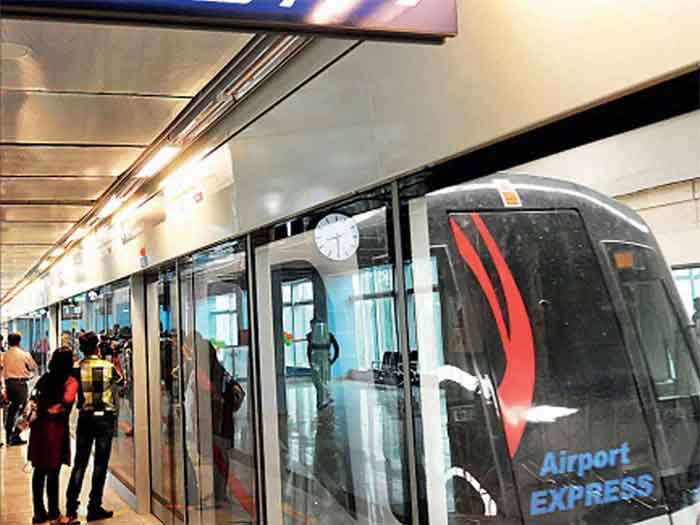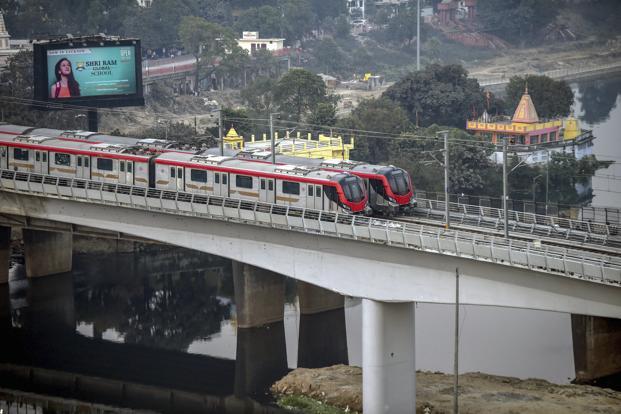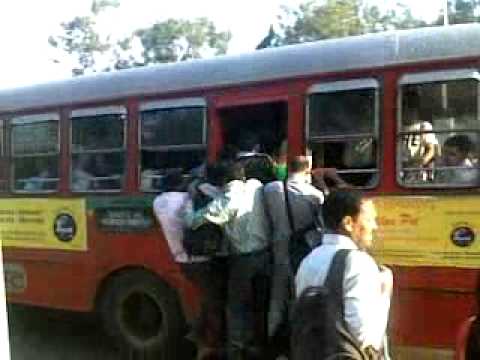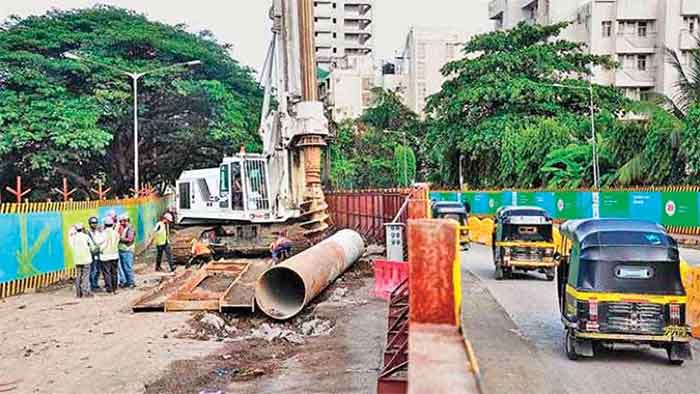
What kind of Swachh Bharat and modern urbanisation we are creating ? Let us start with Bandra suburban station in Mumbai, one of the oldest and prized heritage stone buildings, with its red tile roof.
A perfectly functioning toilet for men and women here was demolished recently and now there is no toilet, urinal of any kind on any of the seven platforms on this important station. This is a gateway to the Bandra Kurla financial and business centre.
So now for thousands of users of the station, there is only one single toilet seat on platform number 1. It is meant for the handicapped and physically challenged and it is thrown open to all, men and women, thousands of them. No urinal is there at all, just to drive home the point further.
This has been done without any information to commuters, any apology, any indication of why this has been done, or letting us know when the new toilet block will open . It may take years. One does not know.
Outside the station the bus system has been thrown into quite a mess with new bus shelters which are so badly designed it is a torture to sit on the bench. This has happened despite earlier warnings, appeals to the authorities to avoid the mistakes committed in earlier bus stops which were designed to serve the interests of advertisers and in the process they have caused pain to the users.
Mumbai is now becoming dirty and ugly because of the rich. Formerly slum dwellers were made the scapegoat. But increasingly it is now clear that the rich are responsible for the mess and they too are realising this.
Look at any average street, the margins are littered with dust laden, abandoned dirty motor cars. The police and the municipal corporation have no clue to what to do with them. They have the powers to auction them but they just do not want to act.
Every new luxury building coming up even in posh areas causes such deafening noise and other nuisance that the new police commissioner, Sanjay Pandey, a rare, honest soul, has made it a priority to ask them to curb the noise. But this is easier said than done.
The glass and cement structures are monotonous, prosaic, drab and the whole purpose of living in a modern city is being defeated. They present a dull façade, all that you see at the entrance are blank walls behind which there are car parking areas. You have to struggle to find human beings here in the building. There can be no community life on such a street, only utter sense of alienation.
Corrupt municipal officials and corporators are destroying good public park in the name of redevelopment, leaving them abandoned for months and years and then spending large amounts in remaking them. Money is the main consideration, not serving the public.
Fires in high rise buildings and shopping malls are now routine with flagrant violations. The fire brigade jawans are losing life and the system simply does not have the technical wherewithal to deal with the menace.
Even in a much better administered city like London there are serious problems of fire as is clear from the widely publicised fire in Grenfell Towers.
On 14 June 2017, a high-rise fire broke out in the 24-storey Grenfell Tower block of flats in North Kensington, West London, 72 people died, including two who later died in hospital. More than 70 others were injured and 223 people escaped. It was the deadliest structural fire in the United Kingdom since the 1988 Piper Alpha oil-platform disaster and the worst UK residential fire since World War II.
The fire was started by a malfunctioning fridge-freezer on the fourth floor. It spread rapidly up the building’s exterior, bringing fire and smoke to all the residential floors. This was due to the building’s cladding and the external insulation, since the air gap between them enabled the stack effect. The fire burned for about 60 hours before finally being extinguished. More than 250 London Fire Brigade firefighters and 70 fire engines from stations across London were involved in efforts to control the fire and rescue residents.
This was mainly in housing for the underprivileged. And this has important lessons for India. In London there was a furore, a big inquiry, in Mumbai deaths in such fires are quickly forgotten, ignored.
In Mumbai people displaced from their dwellings and their land taken away for infrastructure are being housed in high rises where the poor find it very difficult to pay maintenance. So the lifts go out of order and life becomes difficult, they also are now far away from their source of livelihood.
The model of housing the poor in high rises initiated in the U.S.in the fifties failed badly but we have not learnt any lesson here. Look at the failure of Pruitt–Igoe joint urban housing projects first occupied in 1954 in the US city of St. Louis, Missouri. Living conditions in Pruitt–Igoe began to decline soon after completion in 1956. By the late 1960s, the complex had become internationally infamous for its poverty, crime and racial segregation. The 11-story high rises within the complex almost exclusively accommodated African-Americans. All 33 buildings were demolished with explosives in the mid-1970s, and the project has come to represent some of the failures of urban renewal, public-policy planning and public housing, experts point out.
A vicious attempt is now being made to displace the poor from the widely known Dharavi slum in Mumbai as the rich want to take over the prime land in the centre of the metropolis mainly for their own luxury buildings. I have walked in the slum. Not all of it is dirty. Thousands live in the congested surroundings because here they also work in their own dwellings or just near them. In high rises they will lose their livelihood.
But the mad pace with which high rise constructions for the rich are being promoted means more and more rich are going to grab our precious space and throw out the poor to far flung areas imposing a tough travel regime on them while making life cosy for the wealthy.
A look at the sprawling Godrej industrial area and Pirojsha Nagar in Vikhroli and Kannamwar Nagar, the very large housing board or MHADA colony on the other side of the highway is instructive. One never fails to be overawed by the large expanse of Godrej if one travels by train, it extends almost from Ghatkopar station to Vikhroli, all the way one sees nothing but the housing colony or the industrial empire or its remains.
The whole industrial character of Godrej complex formerly known for its manufacture of soaps, locks, fridges and so on is now giving way to high rises for the wealthy. And Kannamwar Nagar, formerly built for the poor and the middle class is now giving way to redevelopment, meaning really housing for the rich with the brother of a Sena leader turning into a big builder and there are others in the field.
These are all political decisions. If you increase the onslaught of the rich at such a scale, the demand for jobs at the lower level is bound to grow and that means influx of more people. Also, there is the idea to drive out people from the rural areas into ghettos in urban areas and capture the abundant rural land for the exploiting classes. Slums are a direct result of unjust policies.
Vidyadhar Date is a senior journalist and author of the book Traffic in the Era of Climate Change
















































